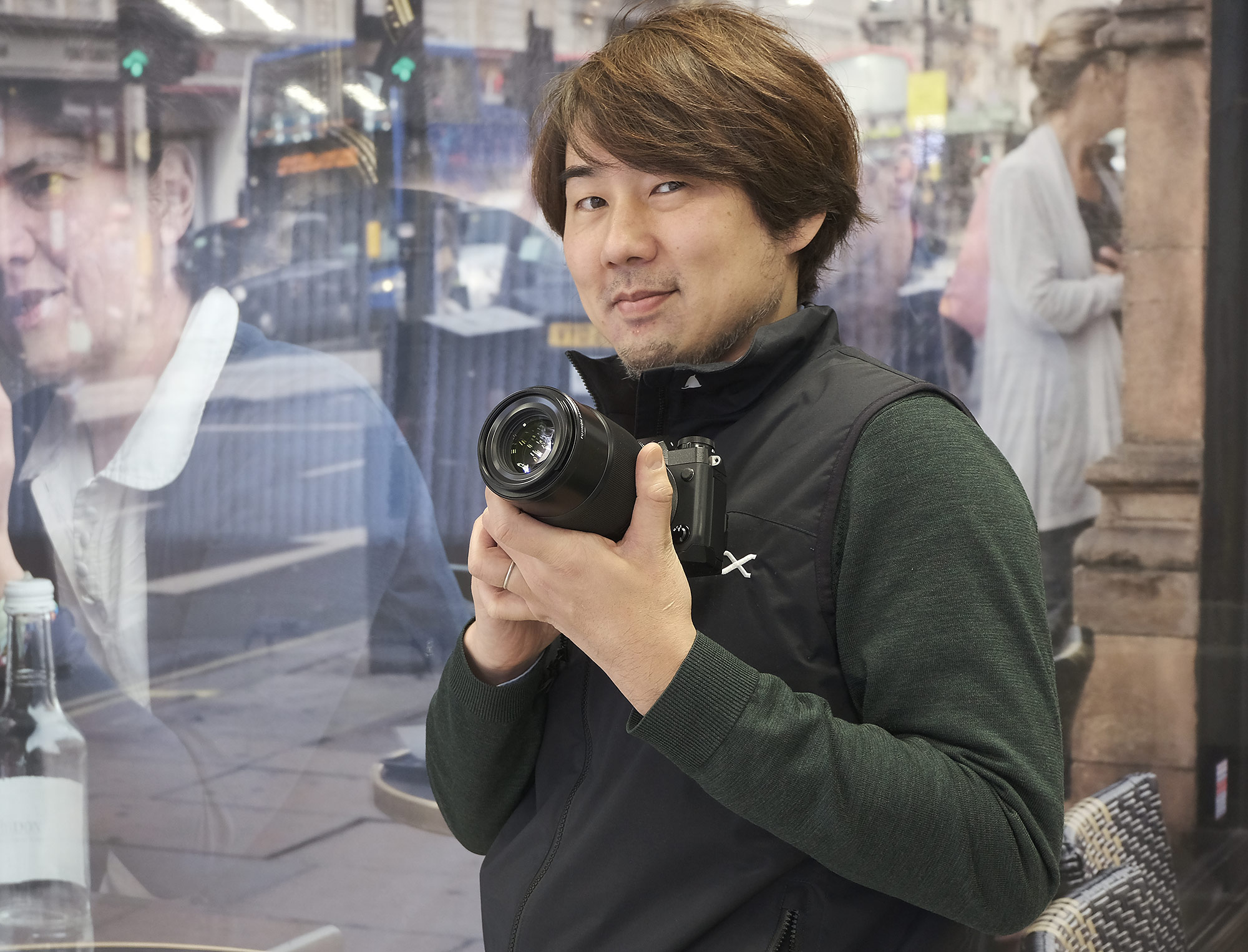
Jun Watanabe is the Manager of Product Planning in the Sales & Marketing group of the Optical Device & Electronic Imaging Products Division at Fujifilm. – Image By DPReview
Fujifilm has finally come completely clean about their IBIS system after vaguely answering questions about how it works across multiple interviews. Back in September, I explained how IBIS on X-mount might work and it turns out Fujifilm does indeed use some software correction in their IBIS system. To be clear this is perfectly fine and Sony does the same thing. I am pretty sure that outside of m43 (m43 does manipulation too, but it’s to reduce the size of some lenses) it is impossible to do IBIS without some software correction or an oversized mount with oversized lenses.
“We have spent the past two or three years developing a system where using both hardware and software, we can cover [the necessary] imaging circle. The most important thing is precision. Because a sensor with IBIS is a floating device, it has to be perfectly centered and perfectly flat. We had already achieved a sensor flatness tolerance down to an order of microns, but the challenge was to maintain this precision with IBIS.”
DPReview’s interview with Jun Watanabe covers a few more new areas that I will highlight below, but I am extremely happy that Fujifilm came clean before launch because I had some testing planned to show their software corrections. This is also likely why the Fujifilm X-T3 is still rumored to not have IBIS beyond the large IBIS size.
- The most effective IBIS lens is the Fujinon 35mm f/1.4 XF R
- IBIS and in body F-Log were top requests by videographers when designing the Fuji X-H1
- Positive feedback on ETERNA and 200Mb/s internal recording
- “Best solution for quick, high-quality video capture”
- “Velvia is tuned to give you colors as you remembered them. More vivid blue skies, for example. Eterna is tuned in the opposite direction, for moderate saturation, with more cyan and green bias.”
- Can’t include Zebra because of hardware constraints.
- 8-bit with ETERNA is a better shortcut than 10-bit in Fujifilm’s opinion
- Camera for Videographers and Photographers
- Autofocus in low light and subject tracking improves
- Added flicker reduction and dynamic range priority, etc…
- “Minimum low light AF response has been improved from 0.5EV to -1EV”
- “New phase-detection autofocus algorithm and parallel data processing”
- “The X-H1 has the same processor as the X-T2 but the algorithms are new”
- “A single autofocus point in the X-T2 was divided into 5 zones. In the X-H1, this has been increased to 20 zones.”
- “Data from each zone is processed in three ways, for horizontal detail, vertical detail, and fine, natural detail like foliage or a bird’s feathers.”
- “We’ve also achieved phase-detection performance down to F11, which means that phase-detection autofocus will be possible with our 100-400mm lens in combination with a 2X teleconverter, with a much higher hit-rate compared to the X-T2.”
- Still, lenses will remain the same but, sounds like more MK lenses to come.
- “Professionals are generally more accepting of larger cameras, and [compared to DSLRs] the X-H1 isn’t that big.”
- Making it larger made it easier to cool
- Fujifilm is trying to attract DSLR users by adopting a lot of the GFX features meant to help transitions.
Fujifilm is doing a lot right with their cameras today and they seem to have something for everyone, but if you are looking at the Fujifilm X-H1 for photography chances are most of the improvements will come to the Fujifilm X-T2 soon. Fujifilm doesn’t have a history of artificially limiting cameras the way other manufacturers do and I doubt they will start now. Granted we might have to wait until just before Photokina and the release of the Fujifilm X-T3, but I am sure that most of the AF and low light focusing improvements you see above will come to the Fujifilm X-T2 via firmware update along with internal F-log. In fact, I wouldn’t be surprised if that ends up being the next “rumor” spun up by other sites since it is a safe bet.
The Fujifilm X-T3 will be the real leap in image quality that photographers are looking for in an upgrade from the X-T2, while the Fujifilm X-H1 delivers the IBIS performance needed by a few and wanted by many. Given enough time all Fujifilm cameras might have IBIS, but Fujifilm is very much a company that tries to represent the needs of all photographers instead of just adopting mass market trends so hopefully, they will always have a professional non-IBIS camera available for those that want one. Some photographers like myself understand the drawbacks of IBIS from an engineering perspective and we would rather own cameras without the feature, but I am always willing to be convinced otherwise.
IBIS technology today is very good, but it should be optional and even Panasonic has acknowledged that by releasing the Panasonic GH5S. Fujifilm is being very deliberate in their marketing strategy and has even pivoted a little over the past few days of interviews. I have no doubt Fujifilm will continue to do right by their fans and it’s partially or why running this site is so enjoyable and why the FujiAddict base keeps rapidly growing.
Follow us on Facebook, Twitter, Instagram, YouTube
Fujifilm X-H1 News, Rumors, and Collaboration
Fujifilm X-H Owners Group
Fujifilm X-H Page
X-H1 Camera: B&H Photo / Amazon / Adorama
X-H1 Body with Battery Grip Kit: B&H Photo / Amazon / Adorama
VPB-XH1 Vertical Power Booster Grip: B&H Photo / Amazon / Adorama
